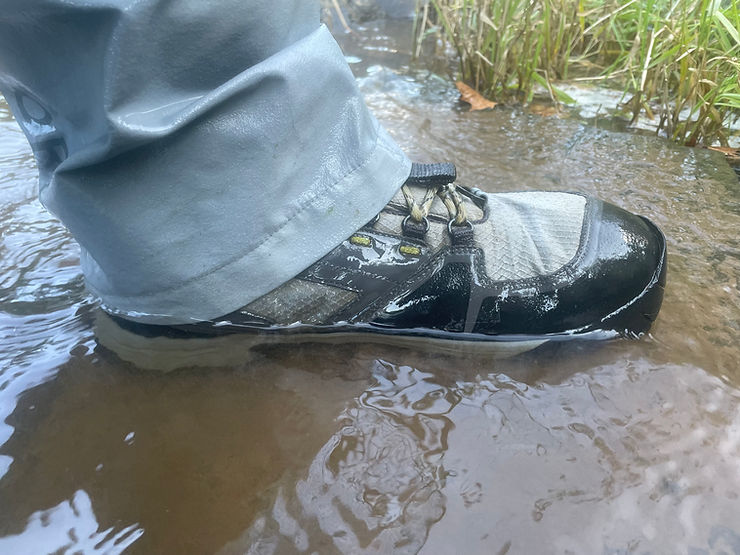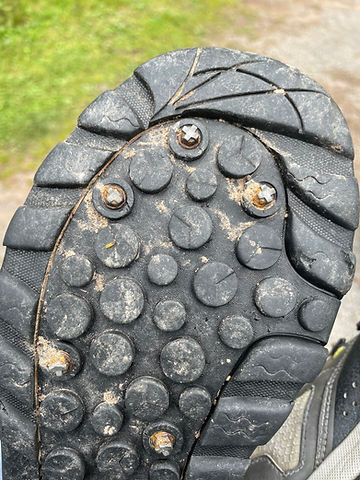Studded or Felt-Lined Wading Boots: Which is Better?

Someone recently asked, should I get waders with studded or felt lined wading boots? It’s a good question, and there are positives and negatives to each. I’ve owned both types, and will explain what I prefer better and why.
What are Studded Boots?
Studs are placed into the soles of wading boots to improve traction on slippery stream bottoms. They are best used sparingly and not in any defined pattern. For instance, rows of studs provide little benefit, and too many studs clustered together can form a surface just as slick as any slimy rock.
Many wading boots today have a pattern implemented on the sole specifically for stud placement. These include strategically placed studs around the outer edges as well as a few across the sole. The idea is that the bottom of the boot will still maintain contact with the bottom while the studs provide extra grip.
Screw-in studs can also be easily replaced, and they actually save the boot tread from wear. The studs wear out before the sole.

Studs have a major drawback, which is they can damage fiberglass boat bottoms and even tear rubber rafts. So if you’re fishing out of these, let the guide or boat owner know that you’re wearing studded boots to make sure they’re okay with that.
A minor drawback of studs is that they can be make long hikes difficult on your back because they lack shock absorption. Effects can vary, of course, based on prior or existing health conditions.
Another minor drawback is that they’re noisy, and the sounds of them clicking on a rocky bottom can spook fish. Trout have incredible hearing, and in high pressures waters, this can sometimes make a difference. So you have to be sure to move solely into position, making as little noise as possible, when wearing studded boots.
What are Felt-Lined Boots?
Felt-lined boots are exactly as they sound. A layer of felt has been added to the sole of the boot, usually at the time of manufacturing. They were a fly fishing standard for many years and are still popular among anglers today. They’re also very stealthy for fishing highly pressured waters.
However, their drawbacks are hard to ignore. They’re basically worthless in muddy bottoms and lakes. They can accumulate ice in extremely cold conditions when moving from one pool to another.
Most of all, they can transport invasive species from one body of water to another, particularly didymo (a.k.a. Rock Snot) which is known to cause whirling disease in rainbow trout and have severe impacts on the environment to which it is introduced. In fact, numerous states and recreational areas have banned the use of felt-lined boots. These include Alaska, Maryland, Missouri, Nebraska, Rhode Island, South Dakota, and Yellowstone National Park. Obviously, if you live in these states or plan to visit them to fish, then felt-lined boots aren’t an option.

Should I Buy Studded or Felt Lined Boots?
This doesn’t mean studded boots are impervious to transporting invasive species. Care must still be taken to clean them with water and soap between visits to new waters to avoid cross contamination.
For practicality purposes, though, studded boots work in all types of terrain, from mud bottoms to rocky bottoms. Felt-lined boots are more of a niche product that can still be worn but its benefits are moot in the majority of circumstances. So if you’re looking for an all around sole that will be effective in a variety of situations, studded boots are the best choice.
Did You Find This Guide On Wading Boots To Be Helpful?
Stay up to date with the Dark Skies Fly Fishing monthly newsletter for free and receive the latest product reviews, fly fishing news, tricks, tips, and techniques, stream reports, as well as updates on new flies added to the Online Store and exclusive discounts!
Sign Up Now
